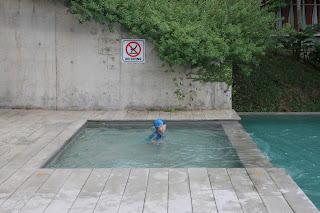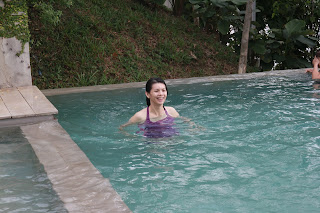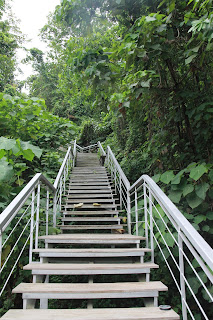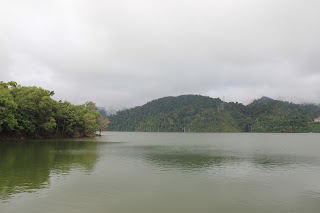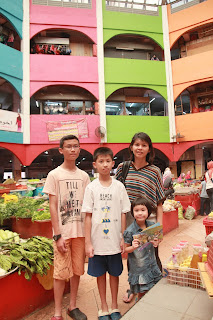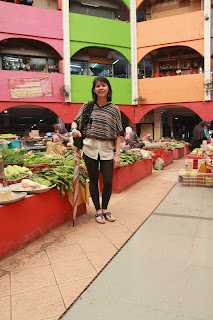Sungai Lembing is a tin mining town 42 km northwest of Kuantan. According to local legend, the local ruler saw a vision of a spear in the nearby river and thus named his town after this vision.
Until the 1860s, Sungai Lembing was a major producer of underground tin. Sungai Lembing town developed in the 1880s when the British set up the tin mining industry, although the history of mining in this area extends much further back. From 1891, the Pahang Consolidated Company Limited, (PCCL), which was under British control, had a 120 -year lease to mine the area. PCCL managed the mine from 1906 until its liquidation in 1986 when world tin prices collapsed.
The pit mines were closed in 1986 due to high operational costs and low yields, but during their heyday they were among the largest and deepest in the world. The total tunnel length is 322 km, with a depth of between 610 m and 700 m.
We visited the museum which highlighted the tin mining industry.( opened in 2003 ). The museum is housed in an old bungalow once used by the mine manager. The museum houses a collection of mining artifacts.
Today the town of Sg Lembing is in decline although it was once the richest town in Pahang, known as El Dorado of the East. In the 1940s about 1400 people worked in the mine. Today many of the wooden shoplots are closed and people are moving away. The town straddles the river, and the main street on the right bank is split by an avenue of majestic trees. At the end, an old wooden building overlooks the padang where games of cricket and other social activities were held.
We spent first day visiting hanging bridge which brought us to a shop selling famous tau fu fah . We also dropped by Crystal house the see the cystal collection of a site supervisor. Dinner was at a restaurant Hoover which served local Lembing food. The food is fairly priced but due to holiday we had to wait almost an hour for the meal. We bought some snacks to eat at the resort. Later Kwee Yap and the children walked around and played some games at the resort. We slept early as need to wake up at 5.30am the next morning for rainbow waterfall.
Rainbow Waterfall (21 Sep 2015 – Monday)
We woke up at 5.30am in the morning to get ready to go Rainbow waterfall. We had a quick breakfast at the pasar where they served sumptuous Lembing mee. This waterfall is quite far from Sg. Lembing Town. It requires 1 hour of wheel drive ride into the jungle. The resort arranged for 4x4 ride which was quite fun. They stopped us at a small hill to catch sunrise. After the 1 hour 4x4 drive, we climbed about 45 mins to where the rainbow waterfall is located. The hike up is over small rivers and rocks.
Thus, it is advisable to wear rubber shoes. I rent a pair of Adidas Kampung for the walk. It was a holiday season when we went to this place. Thus, the place was quite packed with people. The view was fantastic. We were fortunate to see the rainbow on this day as the skies were clear.
Rainbow waterfall or Air Terjung Pelangi is located near the quiet town of Sg. Lembing in Pahang. The tiny water droplets from this high waterfall create a ‘rainbow’ effect when the sunrise rays hits it…hence Rainbow waterfall. This romantic phenomenon has attracted many visitors from as far as Singapore and has in recent times been a popular get away site for many local Malaysians as well.
Panorama Hill of Sungai Lembing (22 September 2015- Tuesday)
A view of the 260m high Panorama Hill from below, we were quite fortunate as it is Tuesday and the crowd is quite acceptable.We reached the peak around 6.30am and saw a beautiful sunrise and misty clouds of Sungai Lembing.The climb takes about 30 to 40 minutes depending on traffic(climbers)and we came at 530am just in time to catch the sunrise.


























































